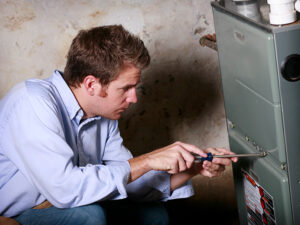
Before getting to the repair work, it’s important to check for any warning signs. If you notice that the pilot light is not lit or that the fan speed is low, your furnace may need some attention. This could be a problem with the thermostat or a malfunction with the blower motor. These problems are easy to fix if they’re caught early enough. You can also check the color of the pilot light. A red light means that your furnace’s ventilation isn’t functioning properly. When this happens, your unit leaks carbon monoxide, which is dangerous to your health and makes your unit more combustible.
In addition to checking for signs of a malfunction, you should also check the temperature of your house. If it’s cold outside, you’ll want to turn the thermostat up a notch or two. If you can’t do this, you may need to call a professional. In some cases, you may also notice a higher than usual electricity bill. If this is the case, it’s probably time to contact a furnace repair specialist.
Another sign of a malfunction is if water is collecting near the heating equipment. This can be caused by a clogged condensate line. Make sure that the air filter is clean and clear and that the vents are not blocked. You should also check the ignitor, as this can be the cause of a malfunction.
One of the first steps in furnace repair involves checking for worn-out parts. These parts often indicate problems with the furnace’s operation. You should also lubricate the motor and blower shafts on a yearly basis. This prevents the need for major repairs and replacements.
If the thermostat is defective, you will not be able to control the temperature of your home. Though basic thermostats are inexpensive, it is important to choose the right model for your system. A programmable thermostat costs a few hundred dollars, but it will save you money for years.
If you notice a scraping sound when the furnace is running, it could be the result of worn-out ball bearings. If this is the case, it is important to contact a professional HVAC technician for a proper diagnosis. Another sign of a worn-out part is a squealing noise. In addition, if you notice a high-pitched squealing sound, it may be caused by a worn-out blower belt. The HVAC technician should be able to pinpoint the problem and fix it.
Often, the most expensive repairs involve replacing a worn-out part. This part can cause the furnace to function less efficiently. It can also damage other parts and increase the risk of a gas leak. You should also look for cold air blowing out of your furnace.
If your furnace won’t start, one of the first things to check is a clogged blower. The blower motor could be clogged, or the fan belt may be broken. Also, you might notice that the blower motor is hot. That means it’s overloaded and will likely need to be replaced.
Dirty blower motors are susceptible to overheating, which can cause electrical shorts and mechanical failure. However, modern blower motors contain built-in electronics to protect against overheating and self-inflicted damage. Regardless, it’s important to check the motor periodically, especially if the furnace is intermittently running.
To check for a clogged blower, turn the thermostat to “Heat.” Move the thermostat dial to check if the temperature is the same. If it’s not, try turning off the furnace. The switch is located by the furnace. You can then turn it back on. If you continue to notice a constantly clogged blower, it’s probably time for furnace repair.
Weak airflow from the vents is another sign that something is impeding the airflow. In this case, you may want to check your furnace’s filter. If the filter is clogged, the blower will not receive enough air.
